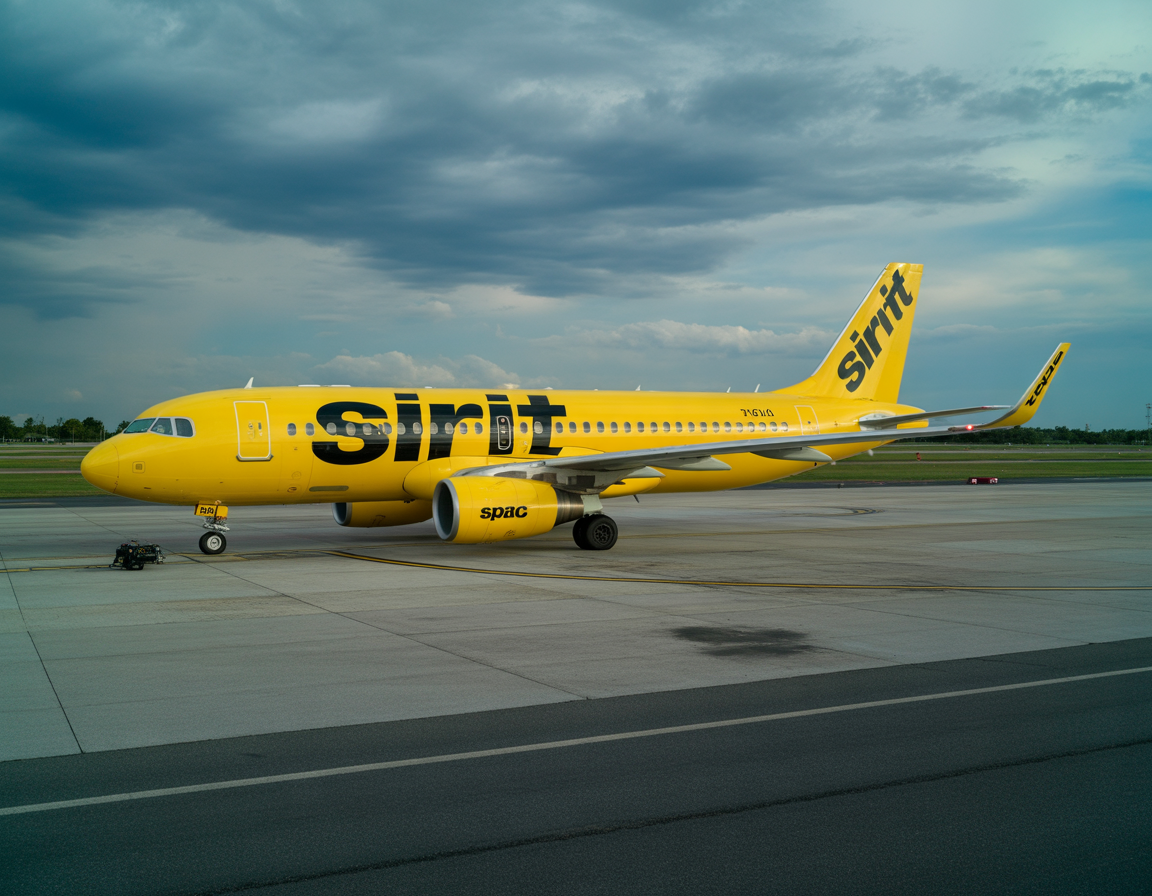Spirit Airlines’ Return to Bankruptcy and Ongoing Flight Commitment
Spirit Airlines has once more entered bankruptcy protection just months after its prior reorganization, yet the airline promises uninterrupted flight services during this period. Passengers can still book flights and use existing tickets, credits, and loyalty points without disruption. The airline also guarantees that employees and contractors will continue receiving payments despite the restructuring process.
Financial Struggles Amid Rising Costs and Competition
The ultra low-cost carrier, recognized for its bright yellow planes and simple service model, faces significant challenges from larger rival airlines introducing their own budget options. Despite implementing cost-cutting strategies such as pilot furloughs and downgraded captain roles, Spirit’s financial hurdles persist, with long-term debt reaching approximately USD 2.4 billion and a negative free cash flow of USD 1 billion reported recently.
The airline’s parent company has expressed concerns over its survival, citing poor demand in domestic leisure travel and other operational uncertainties forecasted to continue through at least 2025. Additional liquidation of assets like aircraft and real estate is under consideration to improve liquidity. Interestingly, Spirit is testing higher-end market segments by introducing tiered pricing with extra perks to appeal to more diverse travelers.
Impact on Staff and Future Outlook
Labor unions have cautioned staff to prepare for various possibilities amid the situation, reflecting the airline’s unstable environment despite union protections. Spirit’s workforce adjustments, including furloughs and reduced ranks in cockpit crews, are anticipated to align with predicted flight volumes through 2026. Previous buyout attempts by competitors such as JetBlue and Frontier were unsuccessful, leaving Spirit to navigate these challenges largely on its own.
Historical Overview: The Rise and Challenges of Budget Airlines
The budget airline sector has disrupted traditional air travel with simplified, no-frills models targeting price-sensitive customers. These carriers often operate with younger fleets and leaner cost structures, enabling them to offer significantly reduced fares compared to legacy airlines. Yet, low-cost carriers face a delicate balance between maintaining affordability and managing operational expenses, which include fuel, labor, and airport fees.
Historically, the airline industry evolved from state-regulated, national carriers to more deregulated markets fostering competition. Frequent flyer programs and airline alliances have redefined passenger loyalty and route accessibility. Despite these innovations, airlines typically generate modest profit margins per passenger, highlighting the sector’s vulnerability to economic shifts, fuel price volatility, and evolving travel demand.
| Key Historical Milestones | Impact on Airlines |
|---|---|
| 1919: First Scheduled International Passenger Air Service | Set standards for commercial air travel routes |
| 1978: Deregulation of US Airline Industry | Increased competition and emergence of low-cost carriers |
| 1981: Launch of Frequent Flyer Programs | Encouraged brand loyalty and customer retention |
| 1990s: Proliferation of Airline Alliances | Broadened networks and improved transfer ease |
Significance of Spirit Airlines’ Situation in the Tourism Sector
Spirit Airlines operates extensive flights across the US, Caribbean, Mexico, Central America, Panama, and Colombia, connecting travelers to popular leisure and business destinations. The airline’s financial instability could affect travel affordability and accessibility, particularly in popular regional tourism spots.
Budget carriers play a crucial role in democratizing air travel, making sun-soaked beaches, vibrant cities, and remote natural retreats more attainable for global tourists. Spirit’s continued operation during bankruptcy safeguards ongoing connectivity for millions, but its financial troubles signal broader industry pressures that can ripple into tourism markets relying on accessible air routes.
Potential Tourism Implications
- Increased airfare volatility: Uncertainty may lead to fluctuating prices, complicating travel budgeting for tourists.
- Route adjustments: Flight cancellations or reductions could impact regional destination accessibility.
- Competition dynamics: Other carriers might adjust offerings to fill any gaps, changing the local market landscape.
Conclusion and Industry Perspective
Spirit Airlines’ repeat filing for bankruptcy protection highlights the tough terrain low-cost airlines must navigate in a competitive, cost-sensitive market. Despite the challenges of high debt and operational costs, the airline’s commitment to maintaining service keeps a vital link open for budget-conscious travelers. This has a direct influence on tourism by preserving affordable travel options to key destinations across the Americas.
For travelers interested in exploring sun-drenched coasts, crystal-clear waters, and engaging marine activities that Spirit’s network supports, the availability of affordable air transport remains essential. Platforms like GetBoat.de offer complementary opportunities to rent yachts, sailboats, and other watercraft in popular seaside destinations connected by such carriers, enriching travel experiences beyond the flight.
In summary, while Spirit Airlines faces financial turbulence, its ongoing flights mean holidays and business trips can continue uninterrupted for now. The airline’s strategy to diversify pricing and improve financial health will be crucial for maintaining its role in facilitating both domestic and international travel, including travel to coastal and waterfront resorts where yachting and boating offer cherished pastimes.

 Spirit Airlines Declares Bankruptcy Again While Assuring Ongoing Flight Services">
Spirit Airlines Declares Bankruptcy Again While Assuring Ongoing Flight Services">
